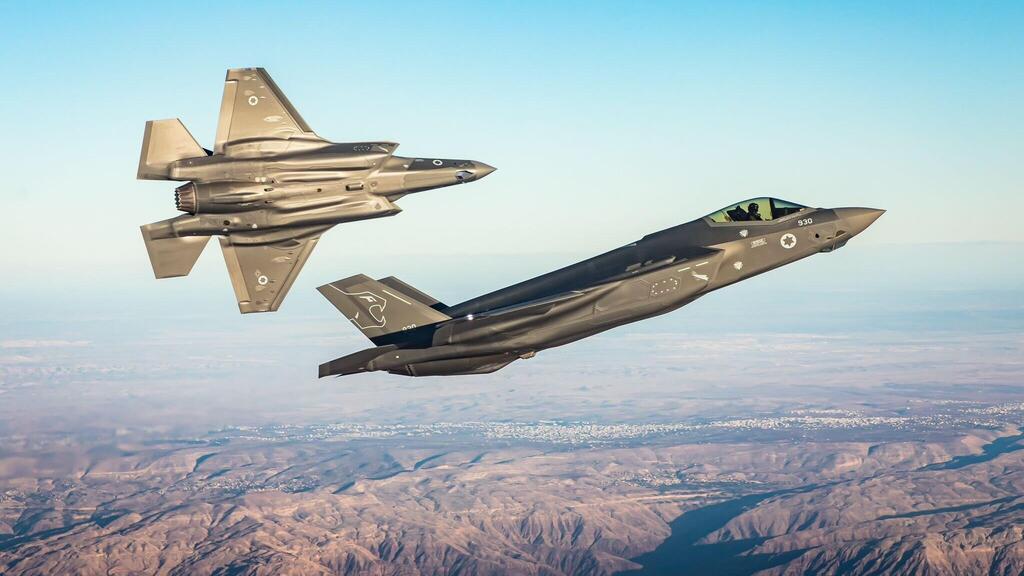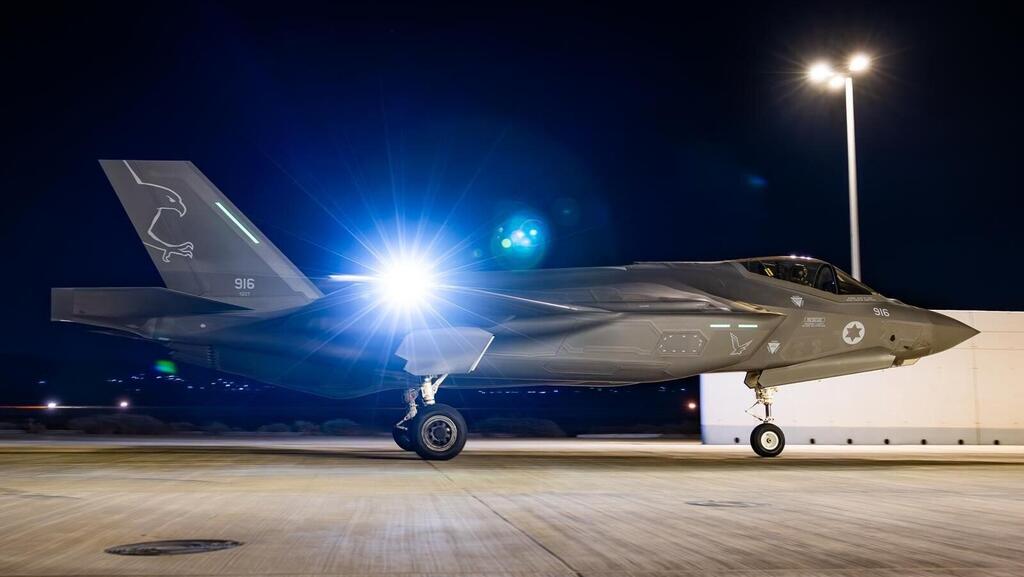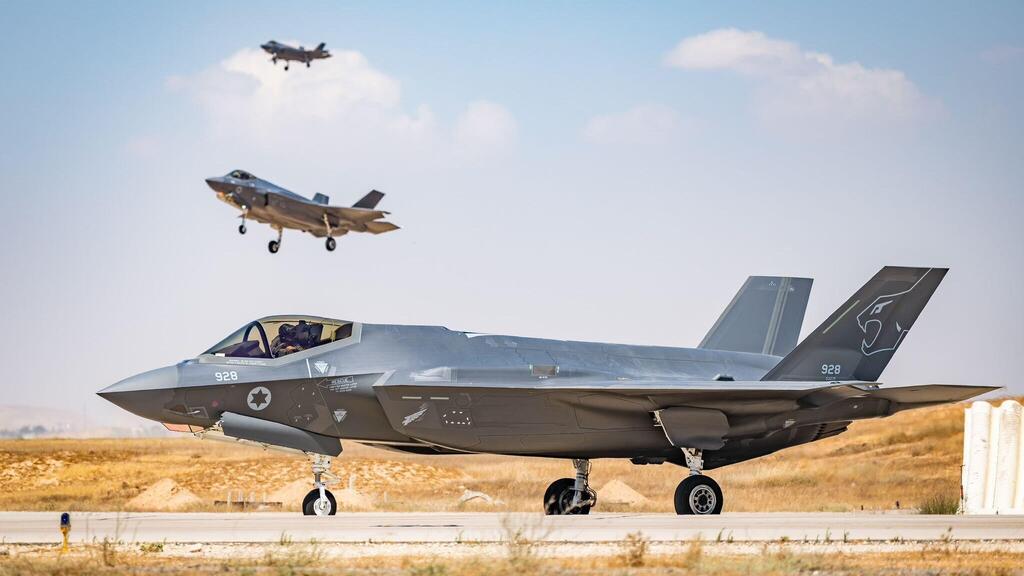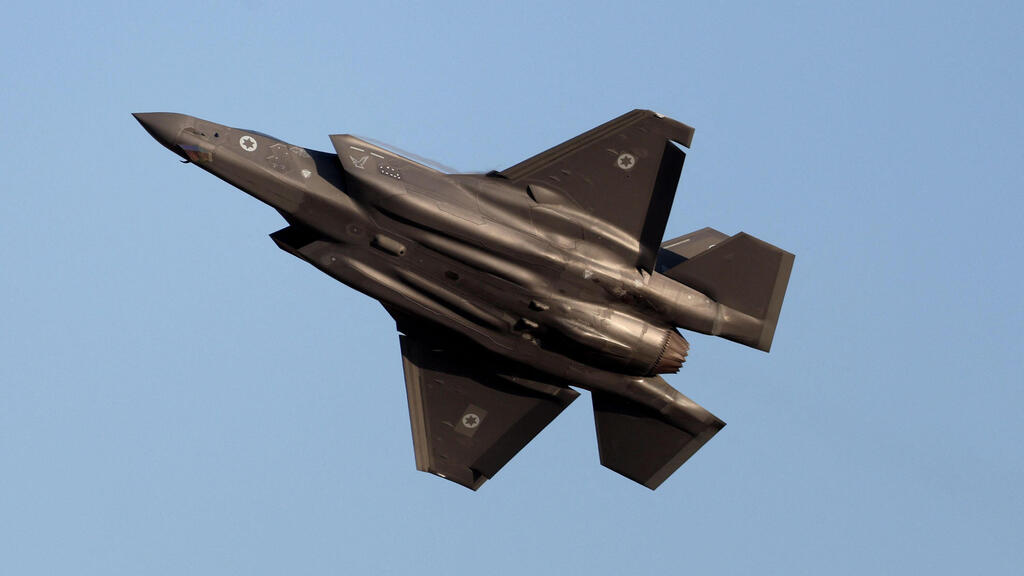The F-35 Adir pilots are responsible for part of the attacks in Lebanon since the beginning of the war, leveraging the advanced stealth capabilities of the F-35 jets. About 700 kilometers south, between Eilat and the Red Sea, these aircraft serve as the last and constant line of defense against the menace of Houthi cruise missiles from Yemen, an action that was seared into the world history of stealth aircraft.
Read more:
The 140th Squadron of the formidable F-35s targeted hundreds of objectives, including Hamas tunnels and hideouts in the Gaza Strip during the war. Two of the unit's newest combat aircraft were also among the first to arrive at the Gaza border, responding to the murderous incursion into the Western Negev on October 7.
Three weeks ago, the Adir pilots were the first to attack the farthest target openly assaulted by the IDF in Lebanon since the onset of the war: Hezbollah arms depots near Baalbek, northeast of Beirut and about 100 kilometers from the Israeli-Lebanese border.
Last week, Israeli stealth pilots completed their fourth strike in the same area of the Shiite terror army: two Hezbollah command centers alongside arms depots. Although the most advanced combat aircraft of the Israeli Air Force are typically reserved for strategic missions in the northern or eastern arenas, the military employs them constantly in the Gaza Strip, alongside a permanent presence of combat aircraft in the skies of the region for immediate availability to support the forces operating on the ground - in addition to planned airstrikes.
The Adir's responsive capabilities for control, command and networking allow the pilots to accurately distinguish between different types of ordnance on the aircraft or other aircraft in the air, according to the type of target "emerging" at that moment.
"Target planning for an attack can be executed from the ground, from the air, within minutes in a breakout event, and it happens almost every day," a senior pilot from the squadron explains. "The special sensors on the aircraft create a comprehensive combat picture, even for additional structures, even when dealing with a dense and less threatening combat sector for us as aircraft, such as the Gaza Strip. On the cockpit screen, we see which bomb is selected - and launched. This is how we, with the Adirs, among other things, destroyed a multi-story building in Gaza, which controlled the area and threatened our forces."
The Adir aircraft also integrate into operations to rescue casualties in an additional aerial dimension to combat helicopters, to isolate the area with "flash" bombs. Thus, combat helicopters and even helicopters like Black Hawk or Yas'ur (Sikorsky CH) can safely descend to a height of 30 feet for casualty evacuation, while security from above against anti-aircraft missiles and armed terrorists is provided by the Adir aircraft at a height of 30,000 feet.
During the ground offensive in Gaza, Squadron Commander Lieutenant Colonel M. entered the Gaza Strip on foot to get an eye-level impression of the attacks for which he and his commanders are responsible, far from the shores of the Strip, and also to talk to his comrades from the brigades and battalions, whose pilots provide constant assistance.
In one of the scenes, Lieutenant Colonel M. saw how Israeli Air Force bombs fell only about 150 meters from ground forces, as part of the close coordination between the forces.
However, the most significant strategic operation since the beginning of the war was carried out by the Adir pilots in the Red Sea area, facing the threat from the Houthis in Yemen. At any given moment, Adir aircraft secure the southern entry to Israel - from the Gulf of Eilat and southward. An average combined attack by the Houthis may include the launch of about 20 missiles, unmanned aerial vehicles and long-range ballistic missiles, each coming at different speeds, altitudes and directions toward Israel.
This divides the defense mission between the pilots and the air defense batteries, according to different layers: larger ground-to-ground missiles already launched from Yemen to Israel are shot down in the atmosphere by Arrow missiles, while other harder-to-detect and slower targets like drones are handled by the aircraft. A drone flies at a speed of 500 km/h, considered slower than missiles.
The F-35 can carry more payload compared to the F-16, and the ordnance is managed at the Nevatim Airbase. Sergeant Major Michael says, "From the beginning, we have a team of 40 people who always rush to eight planes taking off and landing, immediately taking care to arm them with bombs, missiles and fuel."
The U.S.-led international coalition in the Red Sea provides detection and often interception of the main components of the attacks. What remains, usually a small number of aerial threats, is intercepted by Adir aircraft or air defense systems in the last segment before entering the Eilat area.
Adir aircraft operate in this area as a sort of aerial control unit - due to the most advanced capabilities on the F-35, they can detect even slow-flying, low-altitude targets that are considered difficult to detect.
At the beginning of the war, Israeli Air Force pilots intercepted a cruise missile, marking the first time in the history of F-35 stealth fighters worldwide. The operation was carried out entirely in Hebrew, although it involved U.S. Army forces. "I saw the cruise missile in broad daylight through the Adir's camera, at a relatively low altitude," recounted Major R., a 140th Squadron pilot, who made history as the first to intercept a cruise missile with an F-35 aircraft.
"My partner in the cockpit was the one who spotted the target. I executed the airstrike with a missile I launched at it. I was thrilled in the cockpit after the successful hit," added Major R.
He further stated, "We are evolving during combat. We have already updated our operational techniques and combat rotations, even against the possibility of cruise missile launches like these or simultaneous ballistic missile attacks. The cruise missile could have easily exploded on the Yoseftal Medical Center or a hotel where refugees from the south were housed. In such missions, I could find myself flying directly from the Eilat area to strike Gaza, then to the Lebanon and Syria regions, and if necessary, to other areas within that long flight lasting six and a half hours on the Adir."







